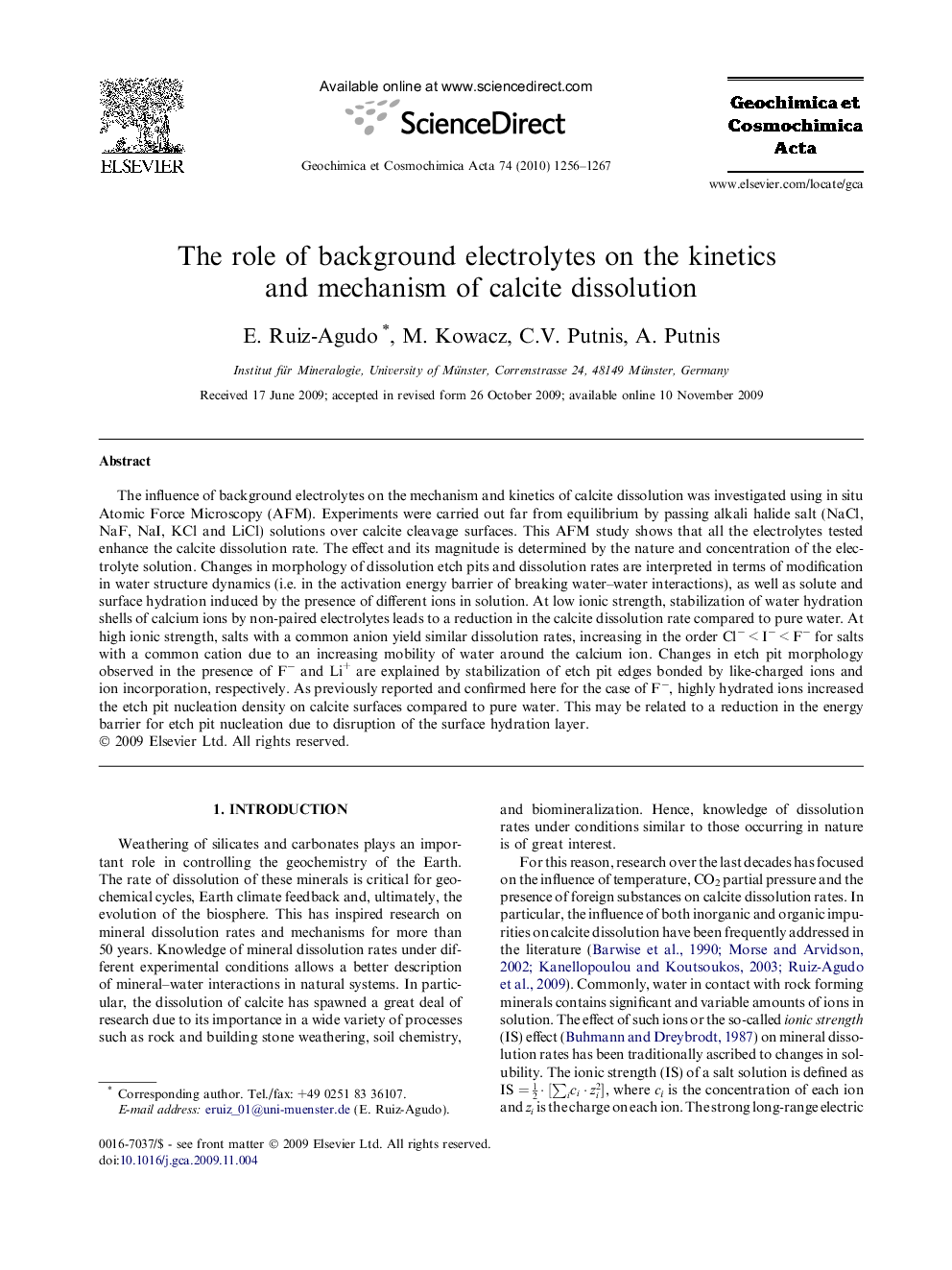| Article ID | Journal | Published Year | Pages | File Type |
|---|---|---|---|---|
| 4703743 | Geochimica et Cosmochimica Acta | 2010 | 12 Pages |
The influence of background electrolytes on the mechanism and kinetics of calcite dissolution was investigated using in situ Atomic Force Microscopy (AFM). Experiments were carried out far from equilibrium by passing alkali halide salt (NaCl, NaF, NaI, KCl and LiCl) solutions over calcite cleavage surfaces. This AFM study shows that all the electrolytes tested enhance the calcite dissolution rate. The effect and its magnitude is determined by the nature and concentration of the electrolyte solution. Changes in morphology of dissolution etch pits and dissolution rates are interpreted in terms of modification in water structure dynamics (i.e. in the activation energy barrier of breaking water–water interactions), as well as solute and surface hydration induced by the presence of different ions in solution. At low ionic strength, stabilization of water hydration shells of calcium ions by non-paired electrolytes leads to a reduction in the calcite dissolution rate compared to pure water. At high ionic strength, salts with a common anion yield similar dissolution rates, increasing in the order Cl− < I− < F− for salts with a common cation due to an increasing mobility of water around the calcium ion. Changes in etch pit morphology observed in the presence of F− and Li+ are explained by stabilization of etch pit edges bonded by like-charged ions and ion incorporation, respectively. As previously reported and confirmed here for the case of F−, highly hydrated ions increased the etch pit nucleation density on calcite surfaces compared to pure water. This may be related to a reduction in the energy barrier for etch pit nucleation due to disruption of the surface hydration layer.
